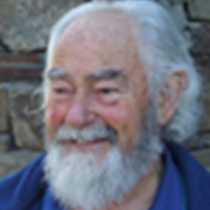On the second week of October, 1805, the Corps of Discovery emerged from the tree-lined banks of the Clearwater River, to the dry grasslands, which border the Snake. Their mode of travel was that oldest form known to mankind; the floating log. In dugout canoes of Ponderosa Pine they rocketed through the riffles and narrows of the river. Clark said in his journal, "We should have made more portages, if the season had not been so far advanced and time so precious with us." In places, they had the non-swimmers walk and carry part of the load. Then they ran the frightening waters with one or two boats at a time, always watching for disaster. A rescue was necessary five times in ten days.
At the mouth of the river pictured here, the water was quieter. A landing was made, lunch was prepared, and clothing was dried out. Lewis called the river coming in from the north Drewyer's River, named for their interpreter and scout Drouillard, whose name none of the group could spell. Since then we have changed the name to the Palouse River, named for the grasslands on its banks.
As we pause here on our journey In the Wake of Lewis and Clark, aboard the Sea Lion, we have the opportunity to explore the Palouse in Zodiacs, or paddle kayaks into its quiet waters. Their lunch in 1805 was no match for the delectable barbecue prepared for us on our return to the ship.




